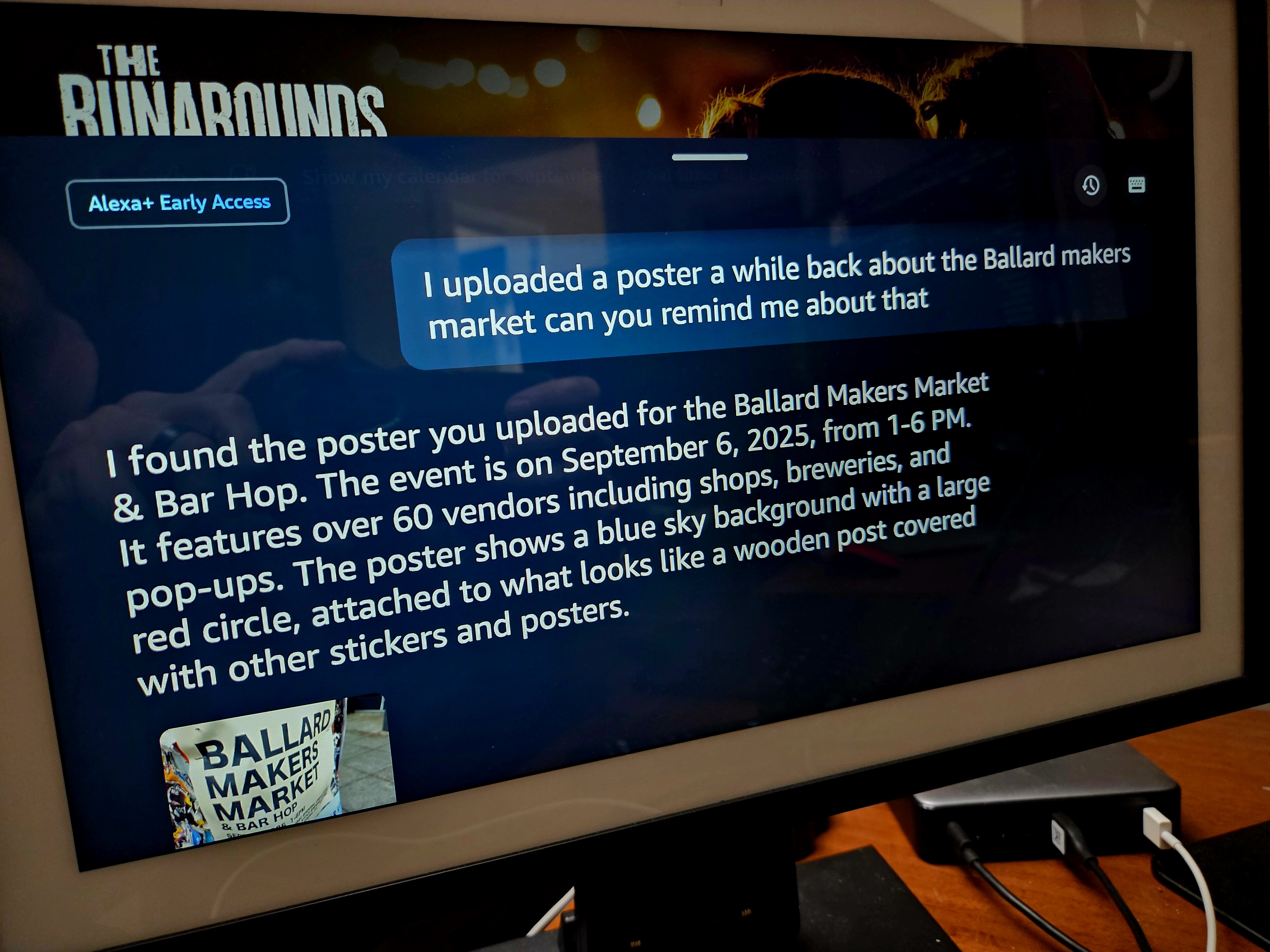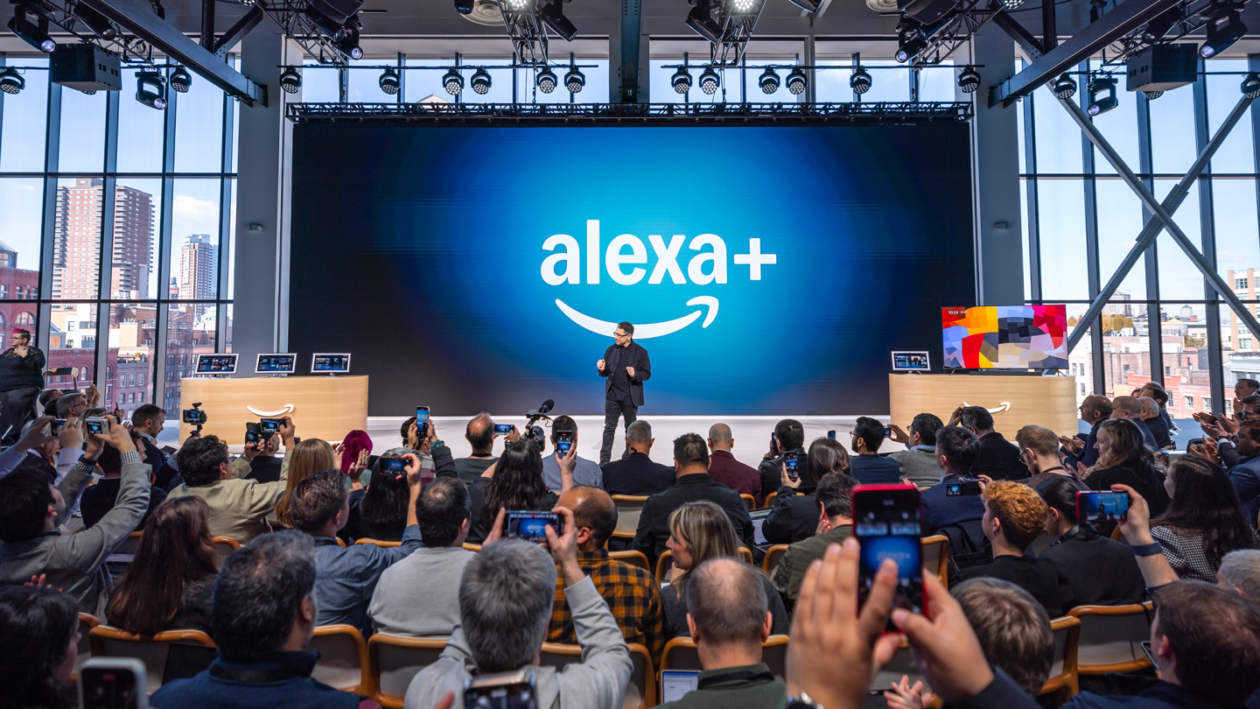Riding my bike Saturday afternoon, I spotted a poster for the upcoming Ballard Makers Market & Bar Hop — the kind of event I knew my family might enjoy. I pulled over and took a photo.
Normally, that might have been the end of it: another forgotten flyer and missed event. But this time, I opened the Amazon Alexa app on my phone, dropped the photo of the poster into a chat thread, and asked Alexa to add the event to my calendar with a reminder.
Alexa extracted the text from the poster, scheduled the reminder, and later, when I asked, recited the details so my family could decide if we wanted to go.
For me, this illustrates the best part of Alexa+, the upgraded version of Amazon’s voice assistant: the ability to take unstructured information — a photo, an email, a snippet of text, a casual request — and turn it into something useful.
Instead of relying on rigid voice commands or carefully phrased questions, Alexa+ can detect, analyze, and surface information when you need it, in a way that starts to feel less like programming a gadget and more like having a personal assistant.
It’s not perfect. Alexa takes time to process uploaded event posters, for example, and in another situation required me to follow up before it actually added an event to my calendar. Still, it’s an early sign of Alexa+’s promise.

Another use case shows the same potential in a different context. When I get an email from my daughter’s school, I can forward it from the email account associated with my Amazon account to [email protected], which saves it in our family’s Alexa knowledge base. Later, in the living room, I can simply ask Alexa for details.
When we wanted to know what students should bring on the first day of school, for example, Alexa pulled directly from the FAQ that had been attached to the principal’s email.
“For the first day of school on September 3, [students] should bring several pencils and pens, paper for notes, and a notebook with pocket dividers,” was Alexa’s helpful response. “They’ll also need lunch or money for lunch. Teachers will let students know if they need specific materials like a composition book for certain classes.”
That moment was helpful, but the process also illustrates one of the shortcomings of Alexa+. The system only works if you take the step of feeding it the information. Alexa integrates with popular online calendars, but because Amazon isn’t a major provider of productivity apps, the experience of building your own Alexa database still feels mostly manual.
Imagine if Alexa could automatically surface or flag details in school emails without the user having to forward them or ask. That would feel more like a true personal assistant.
Also, I’ll admit, forwarding a message with mildly personal info to [email protected] makes me uncomfortable, even with assurances of privacy.

Amazon’s Alexa team is no doubt working to make things more seamless. The ease of sharing information promises to improve with the upcoming launch of alexa.com, a web-based interface that will make it possible to chat with Alexa on a computer. (This feature has been delayed; I have a message into Amazon for an update.)
Alexa+, unveiled in February 2025, is available in an early access period, via a waitlist. It’s free for Prime members, and will eventually cost $20/month for non-Prime members after the early access period.
The biggest change that new users will notice is the ability to have more fluid conversations, powered by generative AI — not needing to repeatedly say Alexa’s name to keep chatting as in the past.
One challenge for Amazon is that Alexa is no longer just competing with other smart speakers. For many people, it’s now just as natural to say “Hey Siri” or open the ChatGPT app as it is to call out “Alexa” across the room. Alexa+ was late to generative AI, and in the meantime, many of us have found other solutions.
I’ve yet to fully embrace some the advanced features of Alexa+. The tasks that can be handled with its agentic capabilities — scheduling a home repair or ordering dinner, for example — still feel easier and more intuitive for me to handle on a computer or with an old-fashioned app.
For now, Alexa+ feels uneven — part futuristic assistant, part workaround. But when it works, it’s genuinely helpful. If Amazon can smooth out the friction and integrate Alexa+ into life more seamlessly, it will have a better chance of succeeding as a next-generation, AI-enabled personal assistant.
Read the full article here










